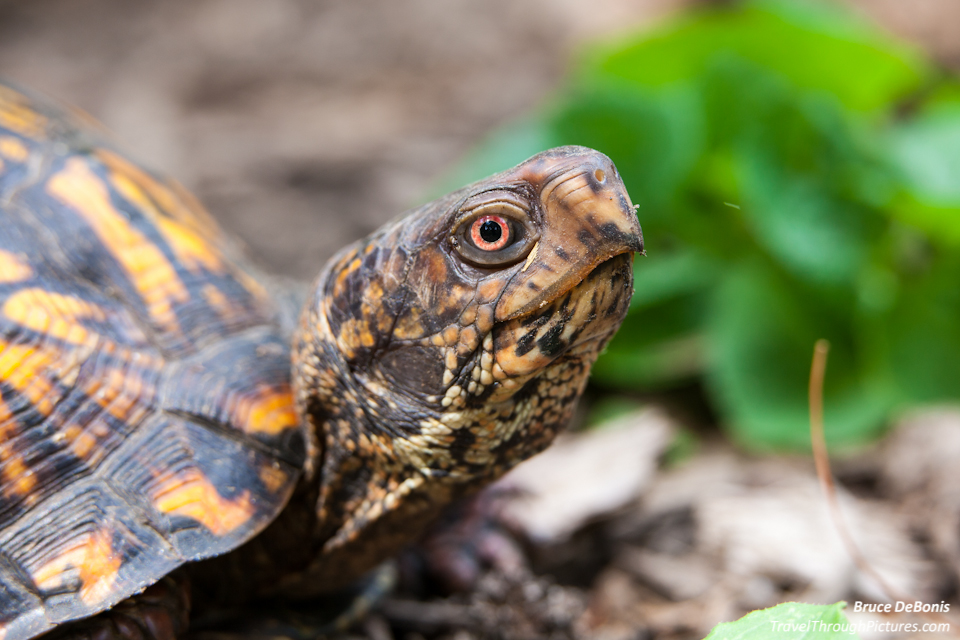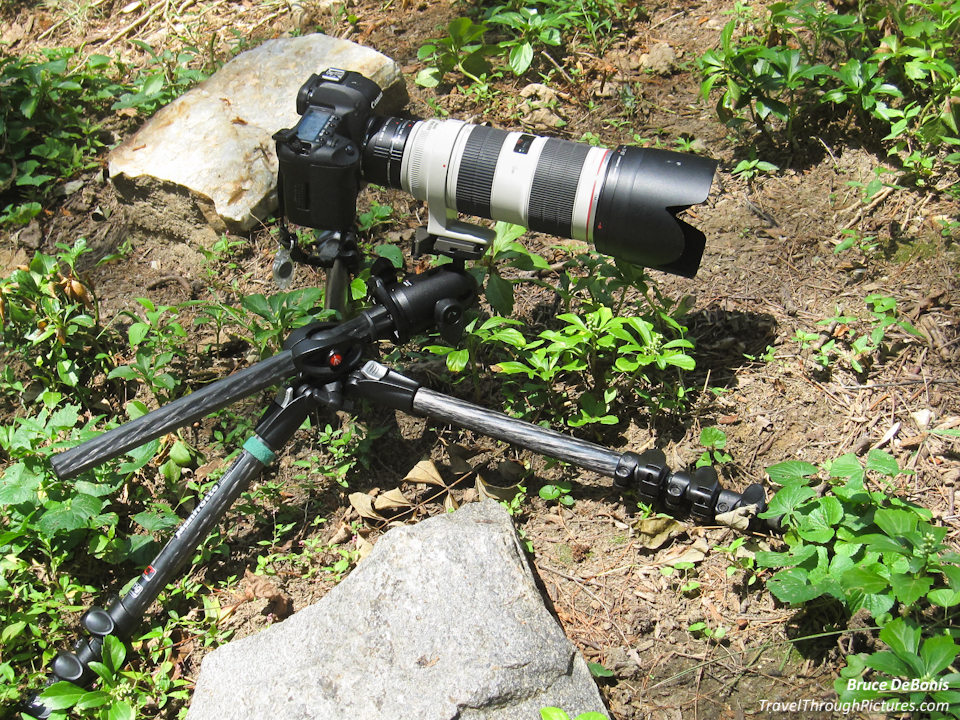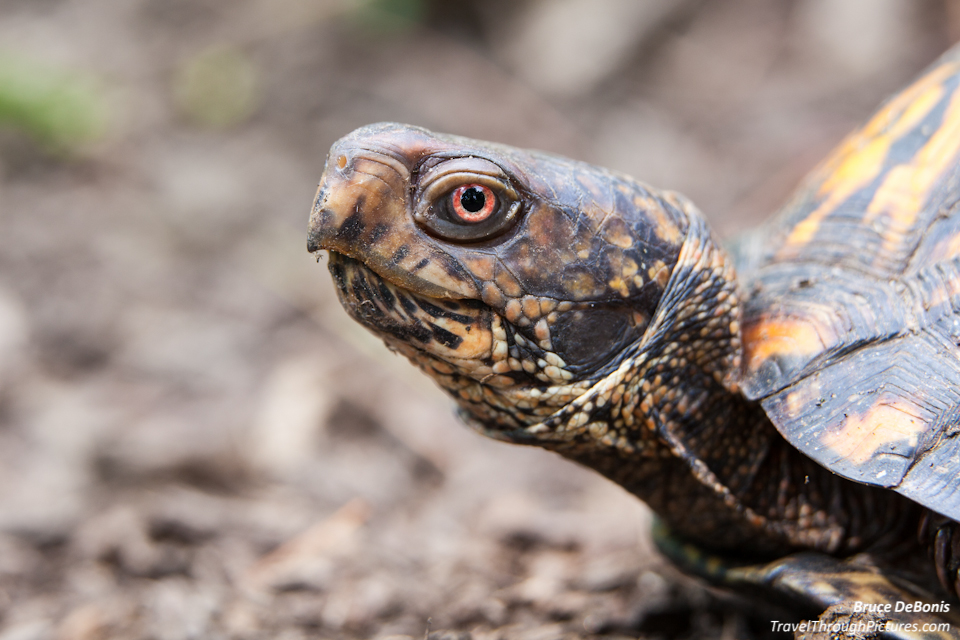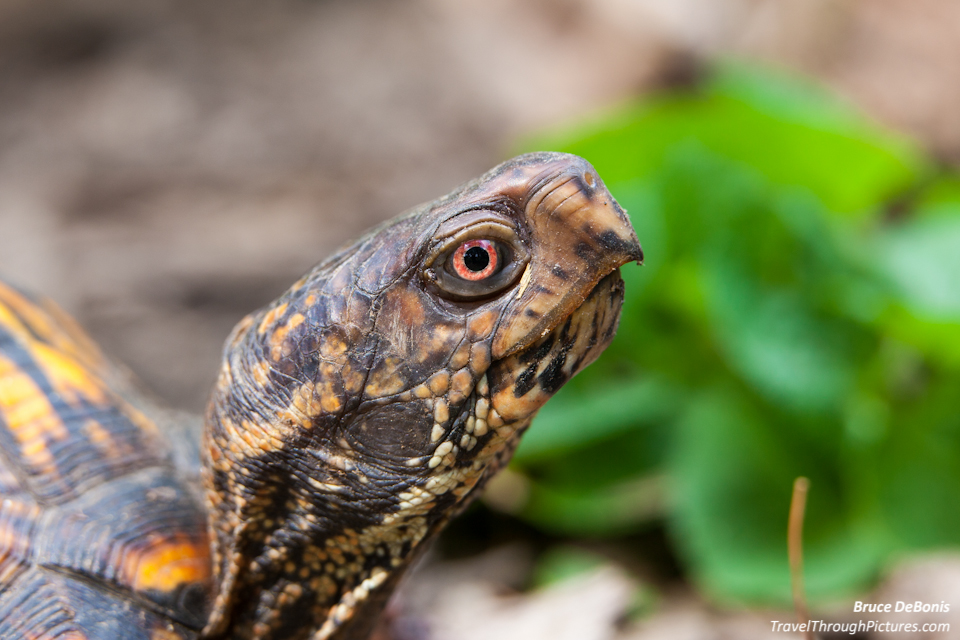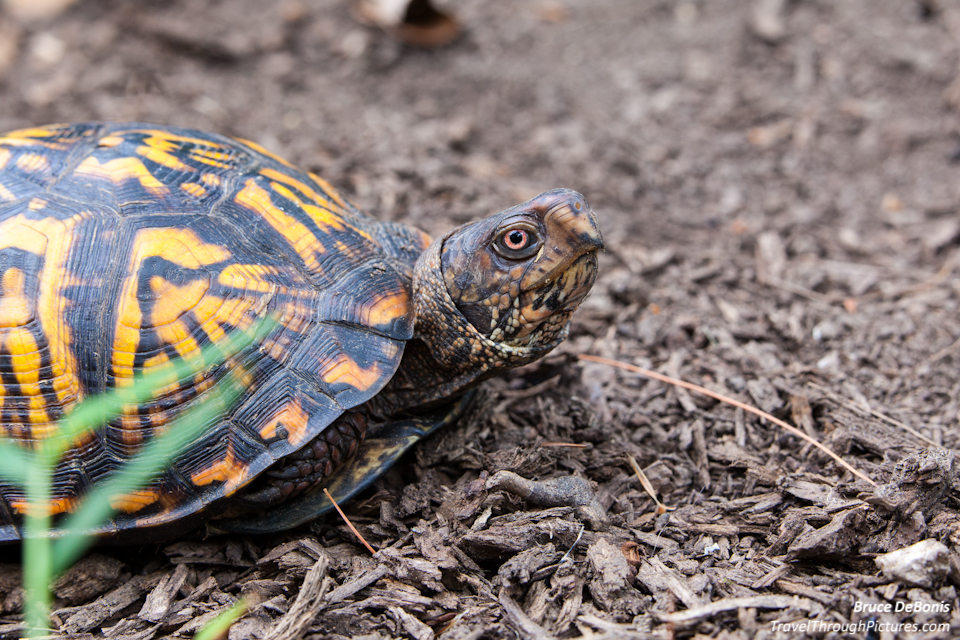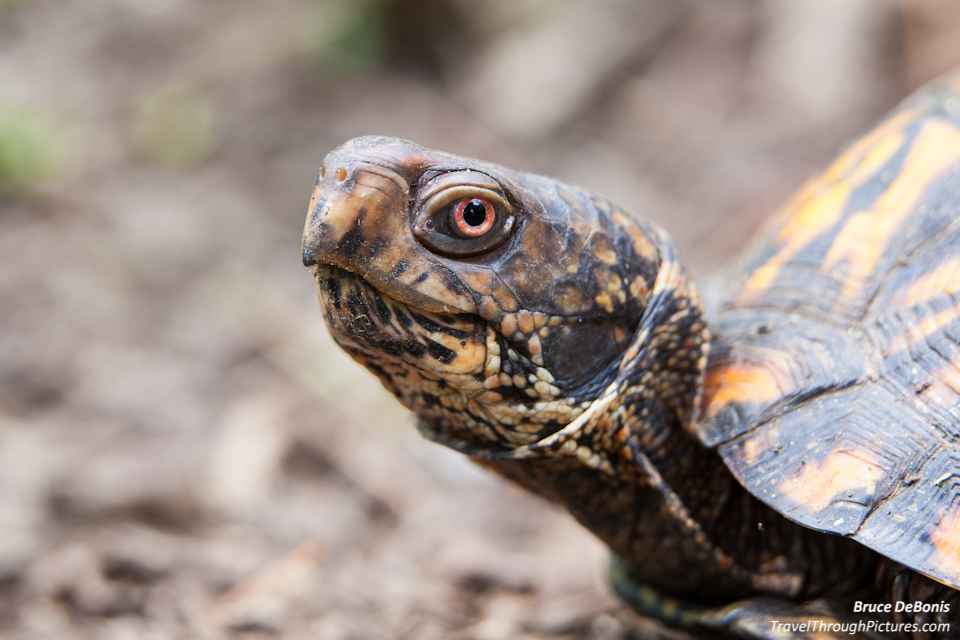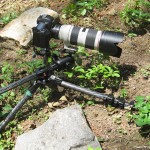Using Extension Tubes for Macro Photography
Box Turtle
I found this guy (or gal?) sitting on the yellow center stripes of a road near my home while I was out for a run. I just had to rescue this guy from the most dangerous animal in my neighborhood: a Philly, Main-Line house frau in a big SUV with a phone in her ear. As a runner, er… actually more like a plodder, I know the real dangers that lurk out there and this is the most feared beast of all.
So I scooped the little guy up and took him home and shot these pics. He was about 8” of shell and a bit longer when he poked his head out.
I had a big surprise when I set this guy down. He took off! He was fast! I could not set up my tripod and focus and think…. he wanted out of there! So I only kept him under duress for a few minutes and set him off in the woods behind my house.
Leave these turtles alone
I feel kinda bad after I picked him up. When later I read up on box turtles, I found out that they instinctively head back to where they hatched and will cross roads to get there. Oh oh. They also don’t breed much and taking them home as pets removes them from the breading pool and can cause their numbers to decline.
Ok, on to photography……
Gotta get up close
I like taking pictures of bug parts. Eyes especially. But if you tried to do this, you quickly found that you cannot get your camera close enough to get these cool shots. Your lens just can’t focus when you get close; the mechanisms and optics just won’t go there. You need to do macro photography and this requires some special equipment.
Now to do macro photography correctly, you really need a true macro lens that can get close, produce 1:1 life-size magnification, and optics that won’t distort your subject. I have my eyes on the highly rated Canon EF 100mm f/2.8L Macro IS USM Lens selling new for about $1,000.00. Whao! A grand to shoot pictures of bug eyes??? Yea, to make those magazine shots, you do need one of these lenses although Canon makes a less expensive, half the cost, 100mm version that is rated very highly for image quality but without IS. Checkout buying a special lens, or do macro the cheap way as I do using extension tubes.
Screw the macro lens, use extension tubes!!!
Extension tubes are cool rings that install between your camera body and whatever lens you would like to use, thus moving the lens farther from the body. This changes the focus range of your lens-camera system and now you can get up real close. Real close.
Extension tubes have no glass or magnifiers in them so they do not degrade picture quality at all. If you use a Canon tube or ones designed for Canon, you retain all the electronic control and camera-lens communications required for auto-focus and whatever else these lenses do. Extension tubes are not tele-extenders, tele-converters, magnifiers, or life-size converters as these are completely different animals and contain glass elements.
The down-side to these tubes, is that you no longer can focus on infinity (i.e., anything far way). This is OK as you don’t want to anyway; you are doing close-up work. If you do pick up your camera now to catch a sunset, the camera won’t lock focus and you will end up with a blurred mess of a picture – so no biggie, just remove the tube.
But my zoom lens says MACRO right on the side!
First off, there is no industry standard that defines what macro is or isn’t. Technically, any manufacturer can use this label on a lens. Big companies like Canon put it on a zoom lens to denote that it can focus closer than “normal” but again, “normal” does not have an industry defined definition.
My Canon 24-105 L f/4.0 IS, the pro kit lens that came with my 5D Mk II has “macro” written on the focus ring but I don’t think any pro would call this lens a macro lens. It just can focus up closer than other “normal” lenses (I guess).
Extension tubes help lenses focus closer
These tubes can be used on pretty much any lens although always check compatibility with Canon before you buy these accessories. I use these even on my monster Canon 500mm L f/4.0 IS lens. I have some pics of birds that are so up-close, that this 500mm couldn’t focus on them so I popped a tube on the thing, and I was back in business. I hope to publish these on my blog here shortly.
What brand tube to buy?
I purchased the Canon tubes but another popular brand is Kenko for less money of course. I think Canon is overpriced and since no optics are involved, I don’t see why buying an off-brand is bad.
As I write this, the Canon 25mm tube is about $140.00 and the thinner 12mm tube is about $84.00. The Kenko-brand sells for $200 but they come in a kit with three of differing lengths. There are others out there that are really inexpensive but they don’t pass the electrical signals back and forth to the lens. This actually is not bad but you now must shoot in complete manual mode.
What tube size to buy?
This not an easy question to answer. In short, the thicker tube is used for longer focal lengths and thinner for wider angle lenses. Canon’s compatibility chart can be found at Canon’s direct web store in the product description of each tube.
I recommend starting out with the thinner tube. If you have a 200mm or 300mm lens, you probably should get the thicker one but the thinner one will still give you good results. I tried a thick tube on my old EF-S 17-55mm f/2.8 USM back when I had a Canon XTI body, and found that I had to get the subject about 1 inch from the glass to focus. I did not like this at all and Canon said this tube was compatible with this lens. Compatible yes, usable, no.
As you can see from my pictures, here, you can stack them to get even closer.
Focusing tips
You’re just going to have to screw around and figure this for yourself. Autofocus will still work but you may have to adjust your zoom first to put the focusing system within its operating range. The first thing I do, is focus by hand using my zoom ring and get it close, then hit my focus button. This usually does it.
Warning: Depth of field is paper thin when you get up close like this. Your focus has to be spot-on and then don’t move or the picture will be wrecked. I recommend shooting with a ton of light if you can, and stop the aperture down to a narrow f/10, f/13 or more if you can to help keep your picture sharp.
Remember, you have some space in focus in front of your focus point that is also in focus. Your focus point is the center of your DOF, not the start of it. So you can get a bit more DOF by first focusing, then moving your body and camera closer by a quarter inch or so to maximize the DOF you are getting.
To do all of this very fine focusing, most folks focus manually and just turn off auto focus. If you want to use your auto focus system, I recommend using my basic camera setup where I decouple focusing from the shutter, and turn on the focusing button on the back of your camera body. Also, use only the center focus point for the most control. This way, you can focus, recompose, and not worry that the camera will refocus when you press the shutter.
Turtle heads
There are other types of turtle heads out there that are great for macro photography. They don’t run away, make you feel guilty for causing them stress, and really do seem to enjoy being photographed. They are called Brussels Sprouts and are actually more common than I thought. Give these a try also.
The Equipment:
- Canon 5D MkII
- Canon 70-200mm L f/2.8 IS II
- Manfrotto 190 CXPRO4 tripod
- Manfrotto 498rc2 ball head
- Canon EF 12 II and 25 II extension tubes
- One pissed off turtle

